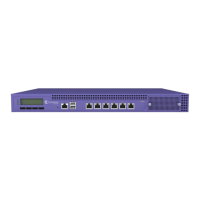NEW!
Privacy Settings for WEP
Important
Always use a restrictive policy to the associated VLAN to reduce your exposure after a breach.
WEP (Static Wired Equivalent Privacy) uses keys for a selected network, that match the WEP
mechanism used on the rest of the network. Each AP can participate in up to 50 networks. Specify one
WEP key per network.
Note
This option is oered to support legacy APs.
Configure the following privacy settings:
•
WEP Key Length — Select the WEP encryption key length. Valid values are: 64-bit and 128- bit.
•
Input Methods — Select one of the following input methods:
•
Input Hex — If you select Hex, type the WEP key input in the WEP Key box. The key is generated
automatically, based on the input.
•
Input String — If you select String, type the secret WEP Key string used for encrypting and
decrypting in the WEP Key box.
•
Key Index — Select the WEP encryption key index. Valid values are 1 to 4.
•
WEP Key — Type the WEP key using the Input Method chosen above.
Related Links
Network Service Settings on page 119
Captive Portal Settings
Go to Networks to enable captive portal. Select the portal type: Internal or External. The configuration
settings depend on the portal type.
Note
By default, when captive portal is enabled, HTTP, DNS and DHCP access is provided to
ExtremeCloud Appliance for redirection.
Related Links
Internal Captive Portal Settings on page 122
External Captive Portal Settings on page 123
Internal Captive Portal Settings
An internal captive portal resides on ExtremeCloud Appliance. Configure the following parameters for
an internal captive portal.
Configure
ExtremeCloud Appliance User Guide for version 4.36.03 122

